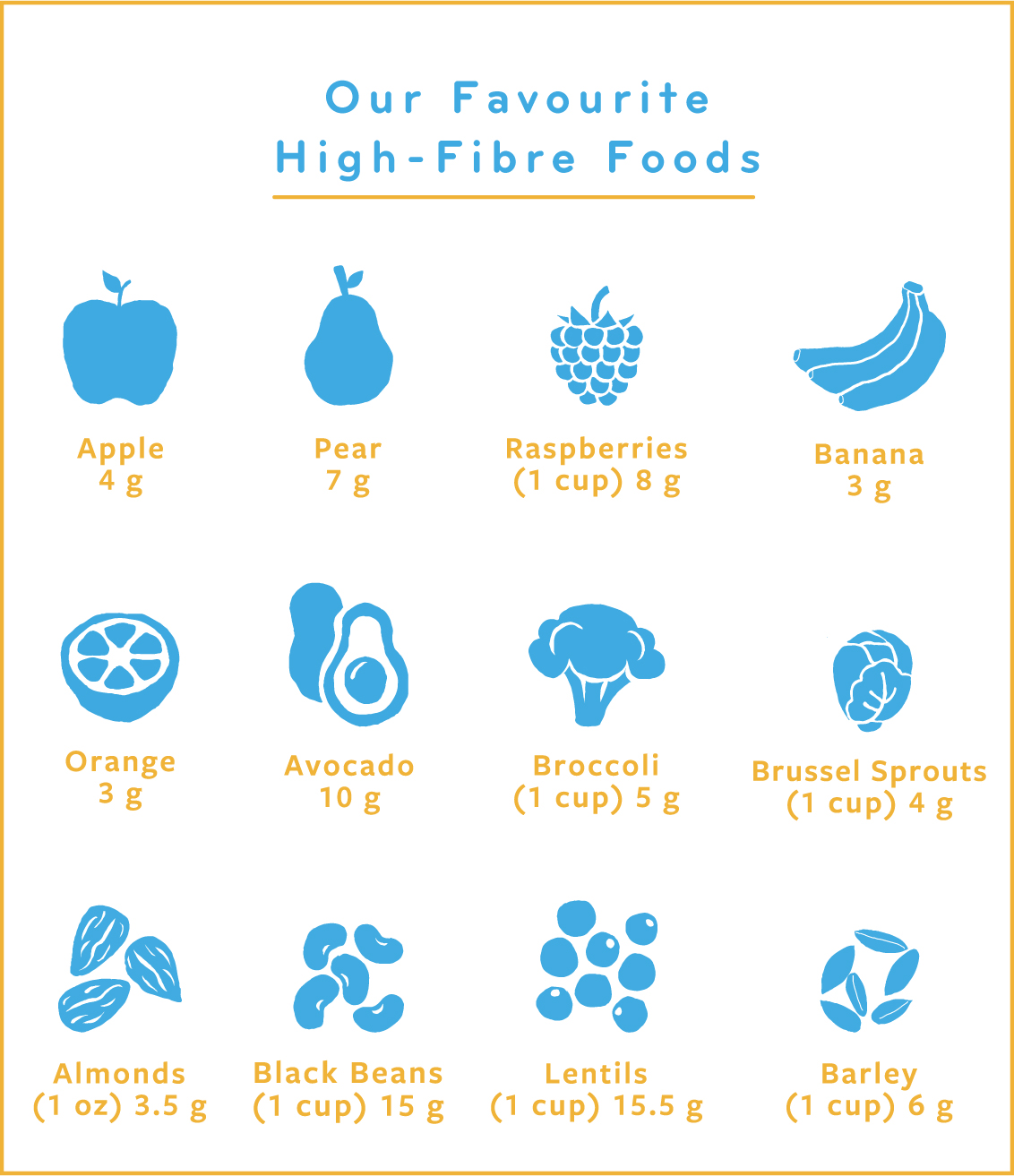Let’s face it., There’s nothing sexy about fibre. And we think that’s a major oversight. We all know to watch our calories and protein intake…but somehow, humble fibre just falls under the radar. Isn’t that just for old people? No way. According to Health Canada, women need 25 grams of fibre per day, and men need 38. And right now, the average Canadian eats about half that much – at best.
Why bother with fibre? Well, aside from the obvious (and amazing) benefits of digestive health and “staying regular,” fibre reduces your risk of heart disease, diabetes and some cancers. And, because it keeps you feeling fuller, longer, a high fibre diet is a fantastic way to maintain a healthy weight. Oh, and it also lowers cholesterol and helps keep your blood sugar at a healthy level. Pretty amazing, right? These health benefits make it an essential component of balanced meal plans, such as our vegan catering in Toronto services, which focus on plant-based, fibre-rich options.
What is fibre?
So now that we (hopefully) have your attention…we’ll tell you a little bit more about this magical nutrient. Fibre is exclusively found in plants, such as fruits and veggies or whole grains. There are two main kinds of fibre, soluble and insoluble. And a healthy diet should have plenty of them both.
Soluble fibre dissolves in water to form a thick gel in your stomach. This substance slows digestion to help you better absorb carbohydrates and other nutrients. And it keeps you from absorbing too much dietary fat and cholesterol, which helps it lower your cholesterol levels overall. Foods like oats, bananas, apples, beans, and root vegetables are great sources of soluble fibre. Incorporating these into meals, like those found in our vegetarian catering in Ottawa, can make high-fibre eating both delicious and accessible.
You can find soluble fibre in oats, bananas, apples, beans/pulses and root vegetables. Vegetarian chili, anyone?
Insoluble fibre does not dissolve in water. It passes right on through your digestive system, and (ahem) keeps things moving smoothly. Like soluble fibre, insoluble fibre makes you feel full, which helps you eat less and feel more satiated after a meal. For diverse dietary needs, including options like our halal catering ensures everyone can enjoy fibre-rich meals.
Look for your insoluble fibre intake in high fibre breakfast cereals, wholemeal bread and pasta, brown rice, skin-on vegetables and nuts/seeds.
Want to make sure you’re getting enough high-fibre foods? We’ve made a handy graphic outlining some of our favourite nutritious ingredients. Take a look before you make your next grocery list…

Is fibre suddenly seeming a little more sexy? Here are some easy ways to incorporate more of the good stuff in your diet.
- Try and choose a high-fibre breakfast such as steel-cut oats or whole grain bread
- Swap out your white pasta or rice for whole grain
- Leave the skins on your potatoes and other veggies
- Snack attack? Try munching on fruit, veggies and dip or nuts and seeds
- Add beans and/or pulses to your favourite soups, stews and salads
The great thing about fibre? It’s pretty much only found in super nutritious foods. So, if you’re getting enough fibre in your diet, chances are you’re also getting most of the other essential nutrients you need. So by challenging yourself to eat more high-fibre foods, you might just find yourself feeling amazing.


